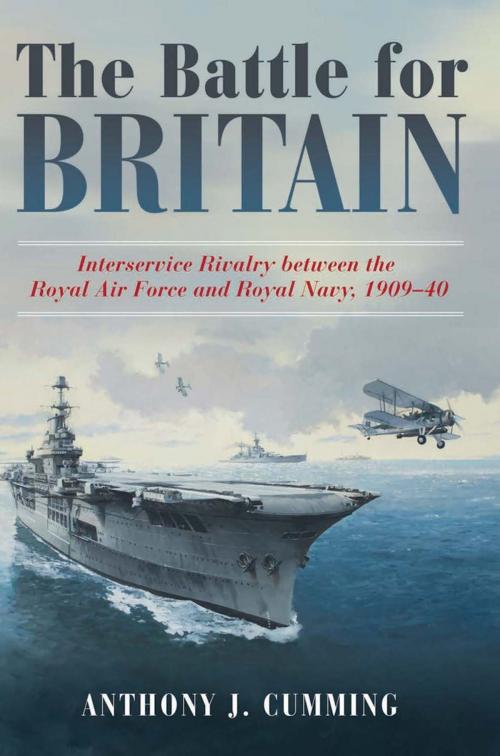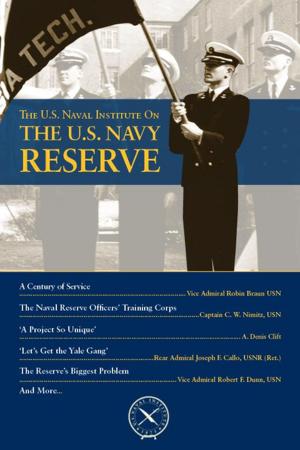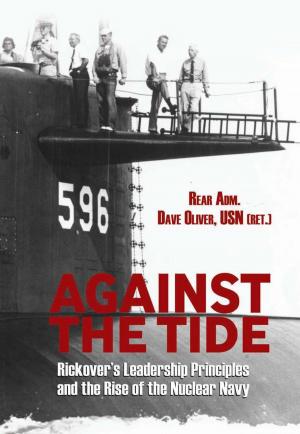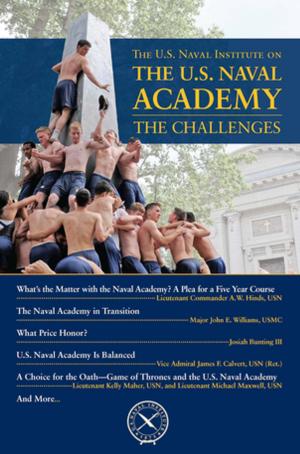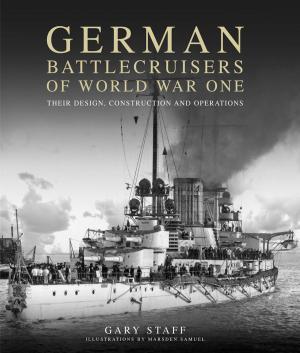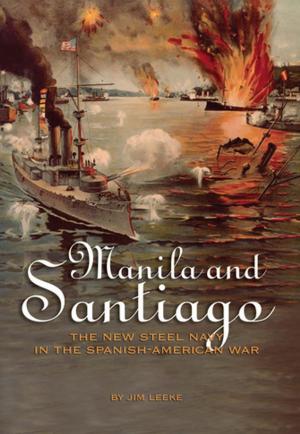The Battle for Britain
Interservice Rivalry between the Royal Air Force and the Royal Navy, 19091940
Nonfiction, History, Military, World War II| Author: | Anthony J. Cumming | ISBN: | 9781612518350 |
| Publisher: | Naval Institute Press | Publication: | May 15, 2015 |
| Imprint: | Naval Institute Press | Language: | English |
| Author: | Anthony J. Cumming |
| ISBN: | 9781612518350 |
| Publisher: | Naval Institute Press |
| Publication: | May 15, 2015 |
| Imprint: | Naval Institute Press |
| Language: | English |
The book is a short review of British air and naval power from 1909 -1940 and represents an attack upon independent” airpower. When Bleriot became the first man to fly the English Channel in a heavier-than-air flying machine in 1909, it seemed to mark the beginning of a fundamental decline in British attitudes towards maritime defense. Exploiting prevalent invasion paranoia, press baron, Lord Northcliffe invited distinguished writers such as William Le Queue and H G Wells to write articles on the theme We are no longer an Island”.
Bleriot’s exploit encouraged the politicians to reassess how Britain would be defended in the future. An important government committee heard evidence that led directly to the forming of the Royal Flying Corps an organization that initially included army and naval wings. Superficially, the Royal Navy was moving from strength to strength as it expanded in the naval arms race with Germany. The service remained in high public esteem but a section of the ruling Liberal party wanted money diverted for welfare a new and powerful competitor for funds. The Two-Power Standard was quietly dropped in 1909 and the astronomical costs of battleship building forced the Navy to look for cheaper substitutes such as submarines and aircraft. A forceful critic of naval expenditure, Winston S. Churchill fostered the early development of airpower when he became First Lord in 1911 and continued to do so when out of office.
The German air raids of 1917 panicked the wartime government into making an ill-considered merger of naval and army air arms that supported imaginative but untried theories of airpower. In 1938, a later government submitted to the national psychosis of bombing by allowing the Royal Air Force to be the only service to rearm without regard to the nation’s ability to afford it. In 1940, the contribution of the Royal Navy was minimized as Churchill praised the RAF for saving the nation from invasion in the Battle of Britain. As a result the RAF’s story has achieved an iconic status that is part of British national identity. Consequently, more important operations including the Dunkirk evacuation; Battle of the Atlantic; Battle of Mers El Kebir and the naval operations against the Italian fleet have been underrated and misunderstood. This ultimate justification of independent airpower continues to undermine understandings of maritime defense and may have skewed US and UK defense policies in the wrong direction for decades.
Bleriot’s exploit encouraged the politicians to reassess how Britain would be defended in the future. An important government committee heard evidence that led directly to the forming of the Royal Flying Corps an organization that initially included army and naval wings. Superficially, the Royal Navy was moving from strength to strength as it expanded in the naval arms race with Germany. The service remained in high public esteem but a section of the ruling Liberal party wanted money diverted for welfare a new and powerful competitor for funds. The Two-Power Standard was quietly dropped in 1909 and the astronomical costs of battleship building forced the Navy to look for cheaper substitutes such as submarines and aircraft. A forceful critic of naval expenditure, Winston S. Churchill fostered the early development of airpower when he became First Lord in 1911 and continued to do so when out of office.
The German air raids of 1917 panicked the wartime government into making an ill-considered merger of naval and army air arms that supported imaginative but untried theories of airpower. In 1938, a later government submitted to the national psychosis of bombing by allowing the Royal Air Force to be the only service to rearm without regard to the nation’s ability to afford it. In 1940, the contribution of the Royal Navy was minimized as Churchill praised the RAF for saving the nation from invasion in the Battle of Britain. As a result the RAF’s story has achieved an iconic status that is part of British national identity. Consequently, more important operations including the Dunkirk evacuation; Battle of the Atlantic; Battle of Mers El Kebir and the naval operations against the Italian fleet have been underrated and misunderstood. This ultimate justification of independent airpower continues to undermine understandings of maritime defense and may have skewed US and UK defense policies in the wrong direction for decades.
The book is a short review of British air and naval power from 1909 -1940 and represents an attack upon independent” airpower. When Bleriot became the first man to fly the English Channel in a heavier-than-air flying machine in 1909, it seemed to mark the beginning of a fundamental decline in British attitudes towards maritime defense. Exploiting prevalent invasion paranoia, press baron, Lord Northcliffe invited distinguished writers such as William Le Queue and H G Wells to write articles on the theme We are no longer an Island”.
Bleriot’s exploit encouraged the politicians to reassess how Britain would be defended in the future. An important government committee heard evidence that led directly to the forming of the Royal Flying Corps an organization that initially included army and naval wings. Superficially, the Royal Navy was moving from strength to strength as it expanded in the naval arms race with Germany. The service remained in high public esteem but a section of the ruling Liberal party wanted money diverted for welfare a new and powerful competitor for funds. The Two-Power Standard was quietly dropped in 1909 and the astronomical costs of battleship building forced the Navy to look for cheaper substitutes such as submarines and aircraft. A forceful critic of naval expenditure, Winston S. Churchill fostered the early development of airpower when he became First Lord in 1911 and continued to do so when out of office.
The German air raids of 1917 panicked the wartime government into making an ill-considered merger of naval and army air arms that supported imaginative but untried theories of airpower. In 1938, a later government submitted to the national psychosis of bombing by allowing the Royal Air Force to be the only service to rearm without regard to the nation’s ability to afford it. In 1940, the contribution of the Royal Navy was minimized as Churchill praised the RAF for saving the nation from invasion in the Battle of Britain. As a result the RAF’s story has achieved an iconic status that is part of British national identity. Consequently, more important operations including the Dunkirk evacuation; Battle of the Atlantic; Battle of Mers El Kebir and the naval operations against the Italian fleet have been underrated and misunderstood. This ultimate justification of independent airpower continues to undermine understandings of maritime defense and may have skewed US and UK defense policies in the wrong direction for decades.
Bleriot’s exploit encouraged the politicians to reassess how Britain would be defended in the future. An important government committee heard evidence that led directly to the forming of the Royal Flying Corps an organization that initially included army and naval wings. Superficially, the Royal Navy was moving from strength to strength as it expanded in the naval arms race with Germany. The service remained in high public esteem but a section of the ruling Liberal party wanted money diverted for welfare a new and powerful competitor for funds. The Two-Power Standard was quietly dropped in 1909 and the astronomical costs of battleship building forced the Navy to look for cheaper substitutes such as submarines and aircraft. A forceful critic of naval expenditure, Winston S. Churchill fostered the early development of airpower when he became First Lord in 1911 and continued to do so when out of office.
The German air raids of 1917 panicked the wartime government into making an ill-considered merger of naval and army air arms that supported imaginative but untried theories of airpower. In 1938, a later government submitted to the national psychosis of bombing by allowing the Royal Air Force to be the only service to rearm without regard to the nation’s ability to afford it. In 1940, the contribution of the Royal Navy was minimized as Churchill praised the RAF for saving the nation from invasion in the Battle of Britain. As a result the RAF’s story has achieved an iconic status that is part of British national identity. Consequently, more important operations including the Dunkirk evacuation; Battle of the Atlantic; Battle of Mers El Kebir and the naval operations against the Italian fleet have been underrated and misunderstood. This ultimate justification of independent airpower continues to undermine understandings of maritime defense and may have skewed US and UK defense policies in the wrong direction for decades.
